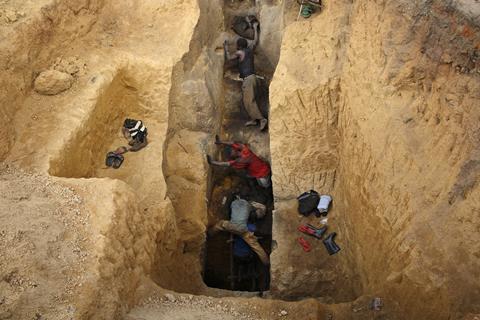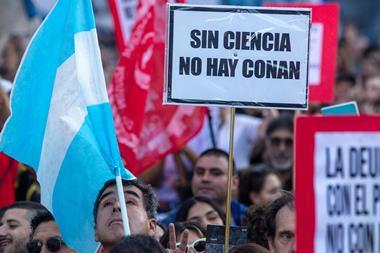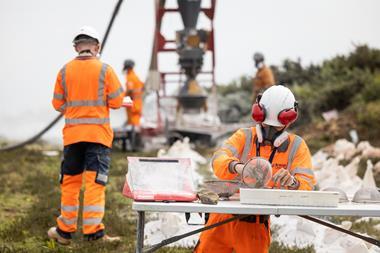Lithium-ion batteries could save the planet from petrol-driven cars, but do the batteries themselves live up to their sustainable reputation? Katharine Sanderson investigates efforts to make batteries better
By 2050 up to 1 billion vehicles on the roads will be powered by electricity, around 72 times more than in 2020. The electrified fleet could see an end to gas-guzzlers, smoggy cities and the stench of petrol fumes. These vehicles will be powered by lithium-ion rechargeable batteries.
But lithium-ion batteries have their own sustainability problems. As the demand for electric vehicles balloons in the coming years, a secondary environmental disaster could be on the cards unless the batteries used in those vehicles can be made in a more sustainable way, with consideration given to their full life cycle. Chemists are front and centre of the battery story, from the early work by the scientists who shared the 2019 Nobel prize in chemistry to those around the world now trying to improve on the materials used in them.
Better batteries will need to use less scarce or problematic minerals, or better still none at all. And those they do use will need to be sourced in a sustainable way. A full life-cycle analysis of the components needs to be considered right at the start of materials development to ensure a supply of batteries into the future, a supply that doesn’t itself ravage the planet.
The main elements that need some serious thought include lithium and cobalt. In May 2021, the International Energy Agency published a report calling on governments to think now about the critical minerals that will be needed to power electric vehicles and sustain renewable energy in future. They highlight the huge increase in mineral demand as we shift from petrol-driven cars to electric ones – with six times more minerals required in an electric car, and the huge increase in their numbers, it doesn’t take a mathematician to work out that a lot more raw material will be required – enough to provide 1.8 million tonnes a year by 2030, according to some estimates.
More ethical lithium
One of those crucial materials, lithium, is not a particularly scarce resource, with the US Geological Survey estimating total global resources of around 80 million tonnes – and as different sources are explored, that number is rising. But lithium becomes problematic when extracting it currently comes with huge environmental problems. According to the US Geological Survey, five mining operations in Australia and two salt extraction operations in Argentina and Chile, as well as some production in China, make up almost all the world’s lithium supply. Lithium is mined in a couple of ways: it is extracted by evaporating it from huge salt flats in Argentina and Chile, a process that uses gargantuan quantities of water, with disastrous consequences for local wildlife and human populations. Alternatively, lithium can be mined as the mineral spodumene (a lithium aluminium silicate), as it predominantly is in Australia and China. The spodumene needs to be processed at very high temperatures, over 1000°C, using vast amounts of energy. It is then leached with acid.

But sustainable lithium production is possible – even in the UK. Cornish Lithium is making use of Cornwall’s mining heritage and unique geology to try and change lithium production. Cornwall sits on granite that is particularly rich in lithium. And deep underground are hot brines that contain lots of it.
Cornish Lithium has drilled 1km deep boreholes at an old mining site and are testing the feasibility of pumping up the hot brines from geothermal reservoirs first discovered by tin miners years ago. At the time, these hot waters eventually forced the miners to abandon their operations, but the legacy of all that geological data is now proving fruitful in locating places that will provide good access to the lithium-rich brines. Cornish Lithium’s plant uses direct lithium extraction (DLE) technology to get the lithium out of the hot brines. These are generally ion-exchange resins, like that developed by US start-up Lilac Solutions in Oakland, California. The exact details of DLE technology tends to be proprietary but Lilac’s uses dilute hydrochloric acid to form a lithium chloride that can then be used in batteries.

It’s harder than it sounds. Those brines are like a hot soup seasoned with just a pinch of mixed minerals. To get just the lithium salts requires a very selective separating system. In the Cornish brines, Cornish Lithium chief executive Jeremy Wrathall says that in the deeper geothermal waters they are also exploring they have around 260ppm lithium, 6000ppm sodium, 2500ppm calcium and 5ppm magnesium salts. ‘You’ve got to try and extract a small needle out of a very big haystack,’ says Cornish Lithium chief executive Jeremy Wrathall. To do this, they flow their brines through the DLE box, which is a column of adsorbent beads. Once the flow stops, the beads are then eluted with dilute hydrochloric acid. The lithium-free brines are finally pumped back underground.
Cornish Lithium showcased its mini pilot plant demo of its technology during the G7 summit, held in Cornwall in June this year. On site, they had started pumping brines from their small borehole and are testing different DLE methods. French firm Geolith are trialling their DLE kit in Cornwall. Their system has adsorbent particles grafted onto microfibres, and while details are kept under wraps, these microfibres are very selective for lithium ions. After running the brines through the system, the microfibres are then washed with acid to give concentrated lithium chlorides. And the brines, with the lithium ions removed, are then pumped back under ground. The chlorides that they can produce can also be converted to lithium carbonates or hydroxides.
Another company, Precision Periodic, has set up a rig at the Cornish Lithium plant. They use ceramic nanobeads with huge surface area. The brines are passed through columns filled with the beads, using gravity, and the company says that it works by adsorption rather than ion exchange, with only the lithium ions sticking to the column and the rest of the brine passing through. Hydrochloric acid is used to strip the lithium from the column. Another company, New Zealand’s Geo40, proposes using huge tanks full of adsorbents that picks out lithium ions selectively.

As well as sucking up hot brines, Wrathall’s company is exploring the disused clay pits outside St Austell in Cornwall. These sites are home to mica minerals, that could provide a plentiful lithium supply. In 1987 the British Geological Survey published a report which highlighted just how much lithium was sitting in the micas in one site near St Austell – up to 3 million tonnes in the first 100m of earth alone. ‘It’s a huge great thing, a scientific paper, and it was ignored until we picked it up,’ says Wrathall. The mica in these sites contain lithium of a lower grade than in spodumene, but Wrathall says this shouldn’t be a problem, because the site – an old china clay pit – has been mined already. And Wrathall is confident that they can use benign chemistry to extract the lithium. They aim to start work on a bigger pilot plant in September, which will be working by March 2022.
Wrathall sees the project as a chance for Cornwall – one of the most deprived corners of the UK – to rediscover its economic wealth from its previous mining heyday. The lithium could be used in a future nearby battery factory, with car manufacturing perhaps also brought to the area. Recycling plants could be built in.
And that’s not all, says Wrathall. ‘This is the ultimate sustainable lithium because it you can also extract zero-carbon heat,’ he says. And with that geothermal heat comes power, some of which can be used to run the lithium plant and the rest can be used elsewhere, even in hydroponic agriculture.
And Cornwall isn’t the only place where lithium might be made sustainably. A project in the Rhine valley in Germany, run by Vulcan Energy Resources, is also striving to produce lithium with no carbon emissions. Their Zero Carbon Lithium pilot plant is operating already, and will inform the decision to fund a full scale facility by 2024, says Francis Wedin, chief executive of the project.
Vulcan’s project also uses geothermal energy, extracting lithium-rich brines and using DLE to get lithium out in the form of lithium chloride, which they then convert to a hydroxide. ‘Europe, and indeed the world, needs all the lithium it can get,’ says Wedin. ‘The current carbon footprint of the lithium industry is unacceptably high, so now that volumes of lithium demand are increasing so quickly, we see our technology and project as being critical to making sure that the transition to electric vehicles is done with a net zero carbon footprint.’
The other components
Moving on from the lithium in the battery, another seriously problematic component of the Nobel-prize winning lithium-ion batteries is in the cathode. The cathode in the battery commercialised by Sony in the 1990s, and still in widespread use today, is lithium cobalt oxide.

‘Right now in terms of raw materials, the real problems are cobalt and nickel, this is a serious problem already,’ says Stefano Passerini at the Karlsruhe Institute of Technology in Germany. And of those two metals, cobalt is the most problematic. Cobalt reserves are predominantly in the Democratic Republic of Congo (DRC). The mining operations in DRC are brutal and have been widely condemned for the human rights abuses that go hand in hand with cobalt mining. Aside from the human cost, such a narrow supply chain can make the cost of cobalt wildly unpredictable and unstable.
Nickel manganese cobalt materials – known as NMCs – are looking promising as cathode materials. Serena Corr at the University of Sheffield, UK, leads the Faraday Institute’s Futurecat consortium. She explains why upping the nickel content is beneficial: ‘When you increase the nickel content, you improve the energy density and push up the capacity,’ she says. ‘The downside is it’s synthetically very challenging to make these materials.’ And that is because of nickel’s redox chemistry. ‘To get the right oxidation state of nickel can be really challenging,’ Corr says. Her group is using microwave chemistry to try and make these high nickel-content spinel structures.
But nickel is only a short-term fix. Ultimately both cobalt and nickel will need to be replaced. Another cathode-focused Faraday Institute project, Catmat, is led by Saiful Islam at the University of Bath. ‘NMC will probably dominate in the near term in electric vehicles,’ Islam says. But he is optimistic that eventually cobalt – and nickel – can both be completely replaced. ‘We’re looking at, for example, manganese- and iron-based cathode materials, as manganese and iron are much more sustainable and much more naturally abundant.’
There’s a chance that other benefits will arise when new materials are sought. ‘It’s known that one of the main hurdles for greater energy density in a lithium ion battery for, say electric vehicles, is the energy density of the cathode,’ Islam says.
Islam and his colleagues are moving away from the traditional layered materials used in lithium-ion batteries towards disordered structures that contain neither cobalt nor nickel. ‘They’re based on the rock salt structure. It’s very familiar to everybody,’ he explains. The structures are disordered so that every cation site has a mixture of lithium and manganese, and every anion site has a mix of oxygen and fluorine. Even though they are disordered, these manganese-based structures have high energy densities – and better yet they have no cobalt or nickel in them. In their latest research, Islam’s group used x-ray absorption spectroscopy and scattering techniques, together with computer modelling, to find out what was special about the redox reactions in one of these manganese rock salts that made it such a good cathode material. The disordered structure worked to trap molecular oxygen as it formed from Li2MnO2F, which made the material behave more like a solid-state electrode. The manganese and oxygen redox couples were also able to work at lower voltages than traditional layered oxides.
One of the main hurdles for greater energy density in a lithium ion battery is the energy density of the cathode
As crucial as cathode research will be in future batteries, the other parts of the battery can also be improved upon.
Passerini has a research group of over 50 scientists and between them they are looking at all parts of the battery. In particular he is interested in the binders that hold the electrodes in place in the battery and attach them to the current collector. The polymers currently used as binders need to be processed using organic solvents, and often contain fluorine – making them harsh to work with and difficult to recycle or dispose of benignly. By replacing these binders with aqueous systems instead, Passerini and others are hoping to overcome the environmental headaches associated with this little-known aspect of battery manufacture.
Passerini is also making electrolytes work better by designing additives to help stabilise the electrolyte and prevent it reacting too much with cathodes in high-voltage lithium-ion batteries, specifically NMC-type batteries. Passerini’s team recently came up with a combination of electrolyte additives that together stabilised the battery and also made it perform better.
Another advantage of this new electrolyte is that it can be recycled. The common electrolyte salt used, LiPF6, reacts with water to form HF, so it can’t be recycled easily. So used lithium-ion batteries end up being disposed of by burning them, explains Passerini.
Beyond lithium-ion
Looking ahead, could the all-conquering lithium-ion rechargeable battery be replaced by a new, albeit related, technology? Current potential contenders include the solid-state lithium battery, the lithium-air battery, and even replacing lithium with sodium or other metals.
I see that the car makers at least are listening – a few years ago they didn’t care at all
But even with tweaked components and sustainably sourced lithium, there’s an attitude shift needed if sustainable battery manufacture is every going to be reality. ‘The best way to make a battery sustainable is to design a cell that can be easily recycled,’ Passerini says. This will be a long process, because for each individual sustainability win, finding a new material in one part of the battery often comes with a pay-off further along the battery process. For example, electrolytes can be made to be easily recycled, but when placed in a full cell they can end up corroding the aluminium current collector. Technology will mean that all these problems can be solved, Passerini says, but it will take time, and might mean the batteries are more expensive.
Back in Cornwall, Wrathall hopes to incorporate recycling into any future lithium battery plant. ‘It is absolutely essential that we start thinking about recycling now,’ he says. ‘But batteries are very difficult to recycle because some people have said it’s like trying to get flour out of bread.’
Passerini predicts more sustainable batteries will only become widely used when manufacturers have no option but to use them. Legislation will be the driving force, ultimately, in making batteries sustainable. In December 2020, the European Commission announced plans that could be the start of this.
Car manufacturers will have to get on board too. The good news is that it looks like this is possible. ‘I see that the car makers at least are listening – a few years ago they didn’t care at all,’ says Passerini.
Katharine Sanderson is a freelance journalist based in Cornwall, UK













No comments yet